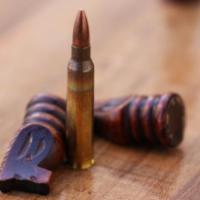
GargleBlaster's Guide to Bullet Chess, Part Two: The Art of the Pre-Move
Hello, again, bulleteers. For those that missed Part One of this three-part series on bullet chess, it is here.
In this episode we will examine the art of the pre-move, a feared, controversial, and above all else double edged weapon. "Pre-moving" is generally defined as moving a piece on your opponent's time. Most servers support this feature and will add your move to an instant buffer queue so that, upon your opponent's reply, your response – if still legal - will be instantaneous. However, if it is now illegal (generally because of an unexpected check), you will instead receive an annoying "beep" and be forced, completely on your own time, to scramble to find some other move.
The main trick to pre-moving is simple: in general, do it only when you are reasonably certain of your opponent's reply, and only then when you really need the extra fractions of a second it provides. The only time it really becomes crucial is in the last ten seconds or so of a non-incriment game. Until then, it is generally better to "hover-move", where you hold the piece you intend to move in readiness during your opponent's time. Also, it is almost never a good idea to pre-move repeatedly in the opening, as your opponent is liable to notice with tragicomic possibilities to follow, such as this surprisingly effective variation for White, which I call the "Sideburn Attack" or "Gotchya System":
In the following two videos we see the risks and benefits of pre-moving (and hover-moving) in action. The second video also demonstrates some tricks with Knights, arguably the most important bullet piece.
I hope this article has demonstrated some of the basics of pre-moving, hover-moving, Knight forks, and how ridiculously time-wasting bullet chess is as a hobby.
Sincerely,
- GargleBlaster
